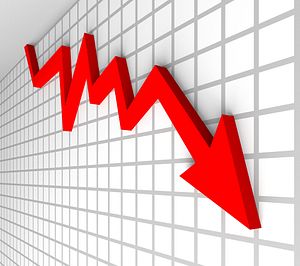The International Monetary Fund released its world economic outlook this week, and the news isn’t good for Central Asia. According to the IMF, recovery will be put off until at least 2017, for reasons frequent readers will find familiar: the Russian recession and low oil prices.
“The economic outlook for the Commonwealth of Independent States remains very weak, reflecting the recession in Russia and its regional spillovers, as well as the effect of lower oil prices on oil-exporting countries,” the April update says.
It’s interesting to look at this year’s April update in comparison to last year’s update. In the 2015 April update, the IMF forecasted a Russian recession and a Kazakh slowdown.
The Russian recession began as the IMF projected it would, with actual 2015 GDP contracting by 3.7 percent (the projection was 3.8 percent). The recent report projects recession to continue through 2016 and puts off positive GDP growth for Russia until at least 2017. In 2015, Russia’s economic troubles filtered through the region, with fellow oil-exporting states subject to many of the same global forces (though not the sanctions) and oil-importing states nonetheless pulled down through lower remittances.
In Kazakhstan, the slowdown was worse than expected. Last year’s projection put Kazakh GDP growth at 2.0 in 2015 and the 2016 update notes actual GDP growth of 1.2 percent. Kazakhstan eventually seized on the IMF’s recommendation in last year’s report that Central Asian economies “should generally allow greater exchange rate flexibility supported by appropriate macroeconomic and structural policies and, if necessary, further depreciation to minimize loss of reserves and the erosion of competitiveness.” But Kazakhstan didn’t untether the tenge from its peg until August and waiting has a cost.
In a February 2015 commentary for the Center for Strategic and International Studies, Aitolkyn Kourmanova wrote, “If Astana chooses to devalue gradually to avoid overshooting, it could keep the cost of imports down for a while and keep inflation under control.” She went on to comment that Astana “risks depleting its currency reserves by repeatedly intervening to prop up the tenge.” Shortly after Kazakhstan released the peg, the New York Times reported that President Nursultan Nazarbayev had said the country spent $28 million propping the tenge over two years.
The IMF’s 2016 projection for Kazakhstan isn’t good: GDP growth of 0.1 percent. The Economist Intelligence Unit has forecasted a recession for Kazakhstan, which would be the country’s first since 1998.
Kyrgyzstan, which doesn’t get individual attention in the report, seems nonetheless to have pushed off slowing growth. Last year’s projection put GDP growth as slowing from 3.6 percent in 2014 to 1.7 percent in 2015. This year’s April update, however, says GDP growth in 2015 was 3.5 in Kyrgyzstan. This isn’t to say that Kyrgyzstan does not face economic difficulties–it most certainly does–but 2015 wasn’t as bad as it could have been. The IMF’s 2016 projection is a stable 3.5 percent growth (through 2017 shows a decline and historically, Kyrgyz GDP has varied–at times wildly–between years).
“The sustained decline in oil prices, Russia’s recession, and the slowdown and rebalancing of China’s economy are weighing on growth in the Central Asia and Caucasus region by suppressing exports, remittances, and investment,” the 2016 April update says.
The IMF’s projections are just one set of expectations; the World Bank has its own set of estimates and forecasts. What’s more important than the individual numbers is the directionality. The economic stressors in Central Asia–Russia’s economy and oil prices–don’t seem to be set for a rapid recovery. With that in mind, the dim economic prospects are likely to persist for another year or more.

































